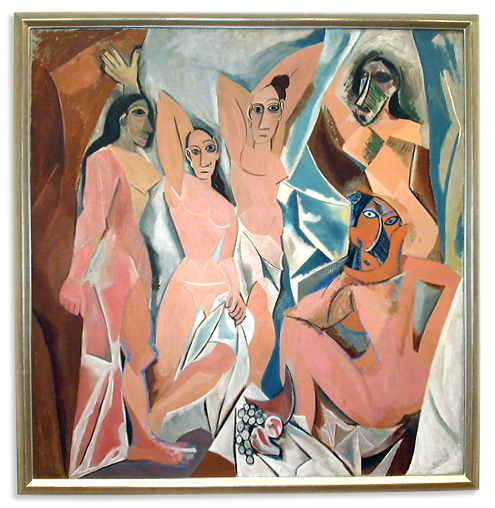Les Demoiselle D'Avignon: The First and Second Observation

The painting, Les Demoiselle D'Avignon, is truly an amazing painting. The size itself is already overwhelming, as mentioned by many of the classmates. However, after our class discussion, I did not know I could picture the women to be lying down and standing up. This really played with my mind because it’s so irregular as to the other conventional paintings showing depth. The first time looking at this painting, more specifically at the faces of the people, I was shocked and frightened, so to speak. I couldn’t tell if they were men or women.
I learned from our class discussion that at first stages of studying this painting, the person to the left was a sailor entering into a brothel with a bunch of naked women. After learning about this information, I applied it to the painting and it made sense. Then I learned from MOMA’s site that after more study, the person to the left was a woman holding up the curtain. Thus, I was puzzled even more. How did the person on the left be recognized as the sailor? I thought the darker color of the face was the detail that made this assumption, however then the person behind the woman sitting down would also be considered a man, in my perspective. To say the least, I was confused. At last, I learned from the MOMA’s website that Picasso made this painting puzzling by taking away the subjective detail of the person on left being a sailor so that the viewer will have to analyze longer and take a deeper look into his work. The only reason we guess it’s a brothel is because the name is a famous street in Barcelona for prostitution, mentioned in MOMA’s site. This is what makes his art so interesting; the viewer is the one to see what it is. For the second time looking this painting with our class, I simply saw muscular women in my observation. I could see the feminine instilled in the people, however, I saw the qualities of men within the five people as well. Also, I liked the incorporation of both lines and curves in the people.
- im.mattlaw's blog
- Login or register to post comments
